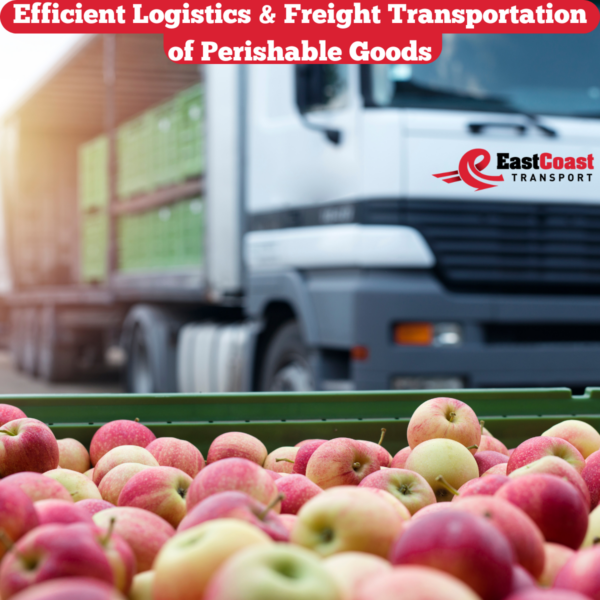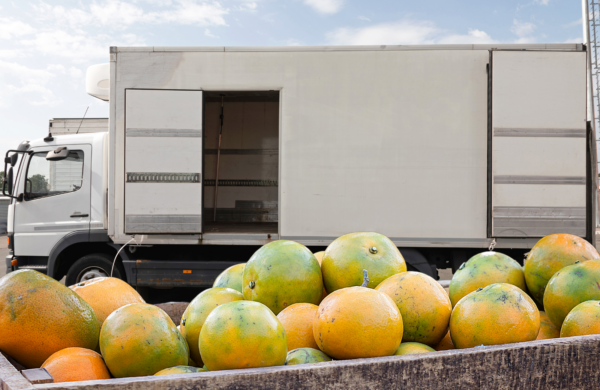In the interconnected global landscape, the critical role of transportation and logistics in maintaining food security cannot be overstated. This article explores the vital relationship between efficient freight transportation, full-service logistics, and food security, delving into the complexities of shipping perishable goods and discussing strategies to prevent food spoilage along the supply chain.
Freight Transportation’s Role in Food Security
Perishable food shipping companies such as East Coast Transport play a pivotal role in nourishing families across the nation. These companies are a cornerstone of a robust food supply chain, ensuring the consistent flow of vital goods from producers to consumers. Key considerations in freight transportation services for food include:
Freight Transportation’s Role in Food Security
Perishable food shipping companies such as East Coast Transport play a pivotal role in nourishing families across the nation. These companies are a cornerstone of a robust food supply chain, ensuring the consistent flow of vital goods from producers to consumers. Key considerations in freight transportation services for food include:
- Temperature and timing are paramount factors.
- Proper packaging and clear temperature labeling eliminate the risk of spoilage during transit.
- Including specific instructions like “Frozen” or “This Side Up” helps prevent miscommunication that could lead to spoiled products.
- Employing well-insulated, sealed containers preserves the right temperature conditions, preventing bacterial growth that spoils food.
Minimizing the time between farm and table enhances product quality. A shorter journey from supplier to consumer also minimizes spoilage, maximizing profits. The choice of an expedited trucking service provider is critical. Reputable 3PL firms like East Coast Transportation have networks of trusted refrigeration carriers, ensuring reliable and cost-efficient transportation within delivery windows.
Examples of Perishable Delivery Items
Perishable delivery services handle an array of temperature-sensitive items, ensuring their safe and timely delivery. Examples of perishable goods entrusted to these services include:
- Fresh Produce: Fruits and vegetables require careful handling to preserve their quality and nutritional value during transit.
- Meat and Seafood: Perishable delivery services play a crucial role in maintaining the freshness of meat and seafood, preventing spoilage and maintaining optimal taste.
- Dairy Products: Items like milk, cheese, and yogurt demand controlled temperatures to prevent bacterial growth and extend their shelf life.
- Flowers and Plants: Delicate flowers and plants rely on these services to preserve their vitality and aesthetic appeal.
- Baked Goods: Items like cakes, pastries, and bread require controlled conditions to prevent staleness and maintain their texture and flavor.
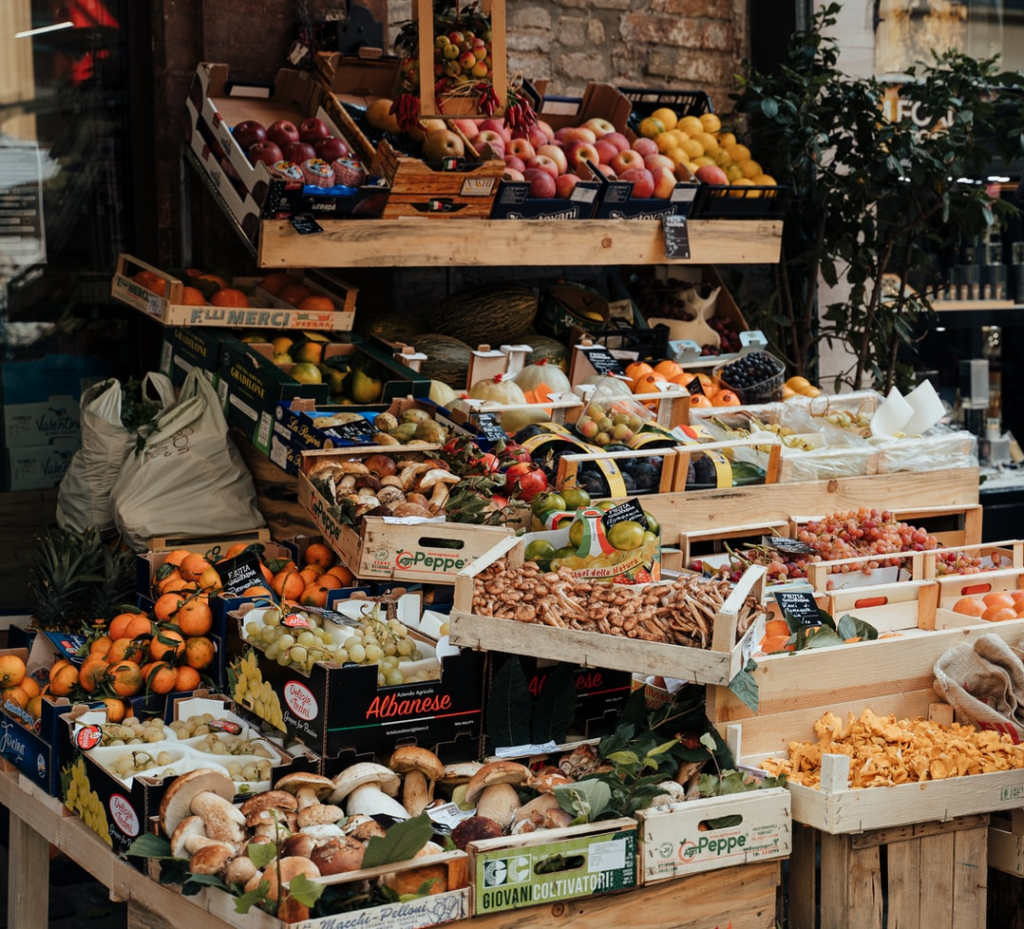
- Medications and Vaccines: Temperature-sensitive medical supplies, including vaccines and serums, necessitate precise temperature control for their efficacy and safety.
- Chocolates: Maintaining chocolates at proper temperatures is essential to prevent melting and preserve their taste and appearance.
- Frozen Foods: Frozen goods like ice cream, frozen vegetables, and frozen meats rely on these services to ensure they remain frozen throughout transit.
- Eggs: Eggs require refrigeration to prevent bacterial growth and maintain their quality for consumption.
- Seafood: From fish to shellfish, seafood is highly perishable and requires rapid transportation to prevent spoilage.
Perishable delivery services cater to a diverse range of items, each demanding specific handling to guarantee their arrival in optimal condition. Contact East Coast Transport to learn more about our specialized transportation services.
Preventing Food Spoilage in Transit
Preventing food spoilage emerges as a paramount concern within the realm of food transportation. This section delves into the multifaceted factors contributing to the risk of food spoilage during transit and elucidates the proper methodologies for ensuring the safe transport of perishable goods. By underscoring the significance of rigorous quality control checks, precise handling techniques, and investments in dependable refrigeration systems, companies can substantially mitigate the threat of spoilage, safeguarding product quality and consumer safety.
Compliance with Food Safety Standards
Perishable food shipments demand meticulous handling to maintain sanitation, cold storage, and expeditious delivery. The FDA’s Food Safety Modernization Act (FSMA) sets forth comprehensive guidelines for freight transportation services engaged in food distribution. Under the purview of the FSMA, food transporters are mandated to institute sanitary transport plans, ensuring uncontaminated and optimally fresh food shipments. Regulatory stipulations for companies providing food transportation services encompass equipment specifications, temperature regulations, and stringent sanitation protocols.
Mitigating Spoilage Risks
By embracing a comprehensive logistics strategy that integrates meticulous handling, stringent regulations, and tailored preservation techniques, the best 3PL companies can effectively safeguard their products from the risks of spoilage during transit, fostering consumer confidence and preserving brand integrity.
- Efficient Route Planning: Minimizing transit time through strategic route planning, coupled with expedited loading and unloading procedures, significantly contributes to successful deliveries.
- Adequate Packaging and Labeling: Proper packaging, such as plastic containers, styrofoam boxes, insulated liners, dry ice, and ice packs, is instrumental in maintaining the freshness of perishable freight. Accurate labeling aids in averting interruptions and delays that may result in spoilage.
- Preserving Specialty Perishables: High-end perishable items, including chocolate, seafood, and organic products, require specialized handling during transit due to their premium nature. Safeguarding their quality throughout transportation is essential to uphold brand reputation and ensure optimal sales.
Perishable Delivery Services
The evolution of food production’s global landscape has significantly expanded the array of available items in grocery stores, enabling year-round access to seasonal produce and the importation of locally unavailable commodities. Notably, the United States has become a significant in both food export and import, with a steady rise in figures reported by the USDA. This flourishing trade heavily relies on horticultural products, grains, feeds, and livestock, all of which contribute to the significant transcontinental transportation of food.
Over the past 15 years, U.S. agricultural freight transportation services’ imports and exports have doubled, largely attributed to the implementation of advanced refrigeration processes and streamlined freight transportation systems. This technological stride empowers farmers and food producers to broaden their market reach and amplify the variety of available food offerings.
Within the realm of perishable freight lies a diverse array of goods with limited shelf lives, necessitating refrigeration to avert spoilage. Perishable foods extend to items prone to decay, expiration, or health hazards if stored incorrectly. Notably, critical applications like serums and vaccines demand unwavering temperature control to maintain their efficacy and integrity. Call East Coast Transport to discuss your reefer truck needs: 1-800-257-7877.
Innovations in Packaging for Perishable Foods
Packaging perishable foods for shipment is an central element in preserving the quality and safety of transported goods. As the demand for fresh and organic foods grows, the organic food industry places specific storage and transportation requirements to prevent potential contamination. This section explores the evolution of packaging techniques that cater to perishable items, such as fresh produce, dairy, and meats, ensuring their integrity throughout transit.
Changing Landscape of Food Production and Trade
The evolution of global food production has transformed the grocery store experience, enabling year-round access to seasonal produce and the importation of locally unavailable commodities. The United States has emerged as a prominent player in both food export and import, reporting consistent growth in figures documented by the USDA. This dynamic shift has led to changes in the logistics of shipping perishable freight, with a focus on maintaining the freshness of items throughout the delivery cycle.
Leveraging Technology and Tracking
In the complex world of perishable logistics, communication inefficiencies across different sectors have historically contributed to food loss. Technological advancements and the rise of third-party logistics (3PLs) are streamlining food chains, simplifying processes, and enhancing transparency. Emerging technologies detect early signs of spoilage, apps facilitate precise tracking of perishable goods, and operational enhancements minimize unnecessary handling.

Temperature Control Trucking Technology
Adhering to strict temperature ranges is paramount when shipping perishable freight, each category requiring specific conditions to preserve color, taste, and freshness. Technology and tracking systems play an essential role in ensuring temperature control. East Coast Transport employs sensor technology to monitor temperatures regularly, triggering immediate alerts to on-site management if deviations occur. These logged temperatures are integrated into a system that automatically generates customer reports for complete transparency.
Packaging Strategies
Appropriate packaging is essential when shipping perishable goods, with different products demanding tailored conditions. For instance:
- Insulation: Various materials minimize heat transfer, keeping products cool during transit. These include Styrofoam, fiber foam, fabric-based foam, plant-based foam, plastic air packets, and reusable plastic containers.
- Proper Seals: Effective sealing techniques prevent air flow and maintain desired temperatures. Methods include tape, overlapping openings, and double insulation.
- Cold Packs: Solutions like dry ice, ice packs, and gel packs assist in maintaining consistent temperatures throughout shipment.
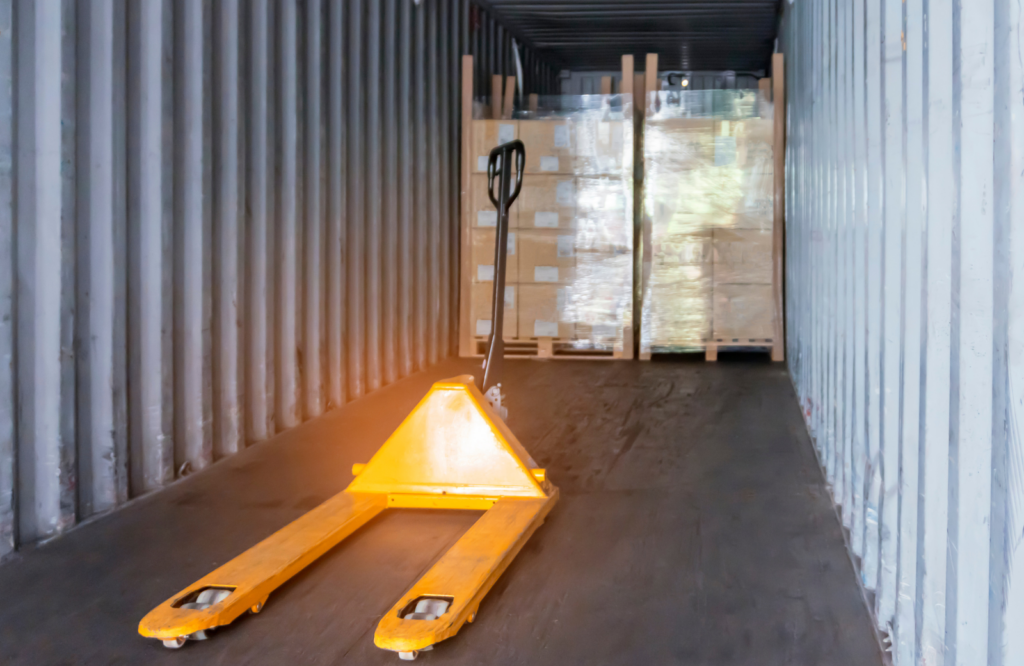
Labeling and Handling
Proper labeling ensures accurate communication and handling of perishable products. Instructions such as “This side up” and temperature requirements guide handling practices. Effective labeling streamlines unloading procedures, contributing to overall efficiency.
Harnessing IoT and Smart Packaging
The rise of the Internet of Things (IoT) and smart packaging revolutionizes perishable logistics. IoT technology tracks food freshness and predicts spoilage risks, benefiting companies that seek to minimize losses. Advanced sensors monitor items throughout the supply chain, detecting and predicting potential spoilage. Innovations like “smart packaging” incorporate color-changing tags or labels that respond to chemical changes, adding an extra layer of monitoring.
Minimizing Handling and Maximizing Efficiency
Human interference and handling significantly impact the freshness of perishable items. Minimizing handling is essential to prevent damage and spoilage. Cold chain 3PLs, like East Coast Transport, play a key role in handling reduction by optimizing transport routes, modes, and methods to eliminate touchpoints in the supply chain. Their expertise ensures that fresh and frozen produce is handled correctly during mode switches or handoffs, ultimately minimizing spoilage risks. Contact East Coast Transport today to discover the safeguards implemented to ensure minimal spoilage throughout the logistics process.
Strategies for Perishable Delivery and Distribution
Efficient perishable delivery and distribution are important links in a successful food supply chain. This section delves into the strategic optimization of logistics by companies specializing in perishable delivery, guaranteeing punctual and secure deliveries. Real-world examples of perishable delivery services shed light on practical methods employed to ensure the consistent availability of perishable foods to consumers while upholding their quality.
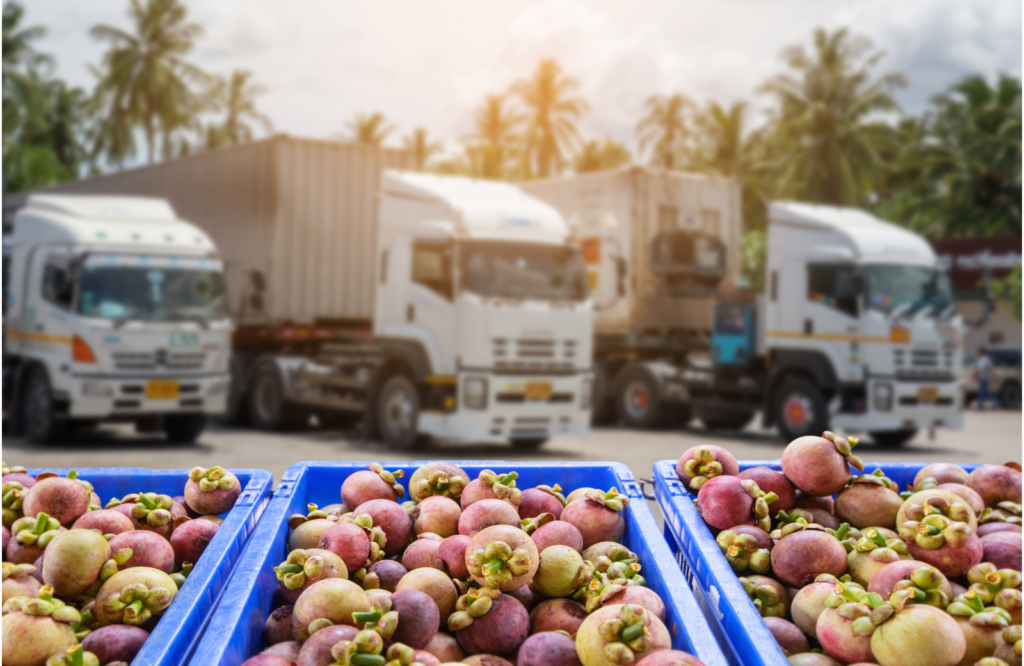
Shipping Perishable Freight: Challenges and Strategies
The shipping of perishable freight presents a delicate process requiring precise packaging, temperature control, and a narrow delivery timeframe to combat spoilage risks. Items such as food, pharmaceuticals, plants, and personal products demand swift transportation to the end-user to retain their freshness. In contrast to non-perishable goods transported in dry vans, perishable freight finds its home in refrigerated trucks, colloquially known as “reefers.” These climate-controlled containers effectively curb bacteria growth, thereby preserving the integrity of perishable cargo.
Categorizing Fresh Foods
Fresh foods fall into three distinct categories based on their density and associated delivery windows:
- High-Density Produce (7-Day Delivery Window): Items like onions, carrots, potatoes, apples, garlic, cabbage, and celery belong to this category, allowing for a 7-day delivery window.
- Medium-Density Produce (2-4 Day Delivery Window): Avocados, oranges, broccoli, peaches, peppers, watermelon, spinach, and tomatoes constitute this group, necessitating a 2-4 day delivery window.
- Light-Density Produce (1-2 Day Delivery Window): Cucumbers, melons, strawberries, green beans, and similar items possess the shortest delivery window of only 1-2 days, underscoring the urgency in their transportation.
Successful expedited food transportation relies on an on-time delivery window. Email East Coast Transport with your quality and freshness expectations and get a quote from our perishable goods logistics experts.
Produce Transportation Companies & Collaborative Perishable Logistics
Produce transportation companies play a pivotal role in maintaining the quality and freshness of fresh fruits and vegetables during transit. They specialize in navigating unique challenges, utilizing technological advancements like refrigeration and monitoring systems to revolutionize the industry. This expertise ensures consumers receive produce at its peak condition. Moreover, these companies adhere to vital regulations such as the “Agreement on the International Carriage of Perishable Foodstuffs and on the Special Equipment to be used for such Carriage (ATP Treaty)” emphasizing compliance with FDA guidelines and customs protocols for shipping perishable freight.
Efficient and secure transit of perishable goods relies on harmonious collaboration among various sectors. Successful logistics strategies entail strong partnerships between food transportation companies, producers, distributors, and retailers. Leveraging technology and data analytics optimizes transportation routes, minimizes wastage, and maintains cargo integrity. The intricacies of food distribution necessitate a sophisticated system of intermodal transportation, including airplanes for time-sensitive items, barges for international trade, and railcars for longer shipments. However, trucks stand out as the predominant method of food freight transportation services, proficiently handling shipments over shorter distances.
An experienced third-party logistics provider (3PL) like East Coast Transport is well-equipped to meet diverse shipping needs, ensuring the seamless flow of perishable goods from origin to destination.
The Benefits of Food Trucking Companies
Food trucking companies are important in enhancing the accessibility of perishable goods. This section explores their vital contribution to urban and local distribution, ensuring the swift delivery of perishable items to consumers. Highlighting their significance in last-mile delivery, the section underscores how efficient food trucking services bridge the gap between distribution centers and end-users, thereby bolstering the efficiency of the supply chain.
- Isothermal Trucks: These vehicles are equipped with insulated containers that effectively minimize heat exchange between the van’s interior and the external environment.
- Refrigerated Trucks: With a non-mechanical cooling source, these trucks can consistently maintain interior temperatures at 55 degrees Fahrenheit or below.
- Freezer Trucks: Employing cold production mechanisms, these trucks ensure a consistent temperature ranging between -10 and -4 degrees Fahrenheit.
The cost of shipping perishable food is influenced by numerous factors, encompassing appropriate packaging, the coordination of refrigerated trailers, and the intricacies of the pickup and delivery window. Advanced planning and obtaining multiple logistics and transportation quotes are pivotal in identifying the most cost-effective solutions while upholding service quality. In light of the time-sensitive nature of perishable freight, expedited deliveries are paramount. The swiftest and most direct routes are meticulously chosen to ensure that perishable items reach end-users swiftly and in optimal condition. Diverse vehicle options cater to the specific preservation needs of different types of freight.
Enhancing Efficiency with Third-Party Logistics Companies
Leveraging the specialized knowledge of Third-Party Logistics (3PL) companies for truck freight services offers versatile and efficient transportation solutions that encompass various supply chain aspects. Through seamless integration of logistical elements, East Coast Transport ensures smooth operations, particularly in the perishable goods sector, effectively connecting producers, distributors, retailers, and consumers.
East Coast Transport LLC stands as a capable 3PL partner, offering a network of carriers, advanced technology, and a successful track record in timely and temperature-controlled perishable freight delivery, along with a range of specialized transportation options to suit various shipping needs.

